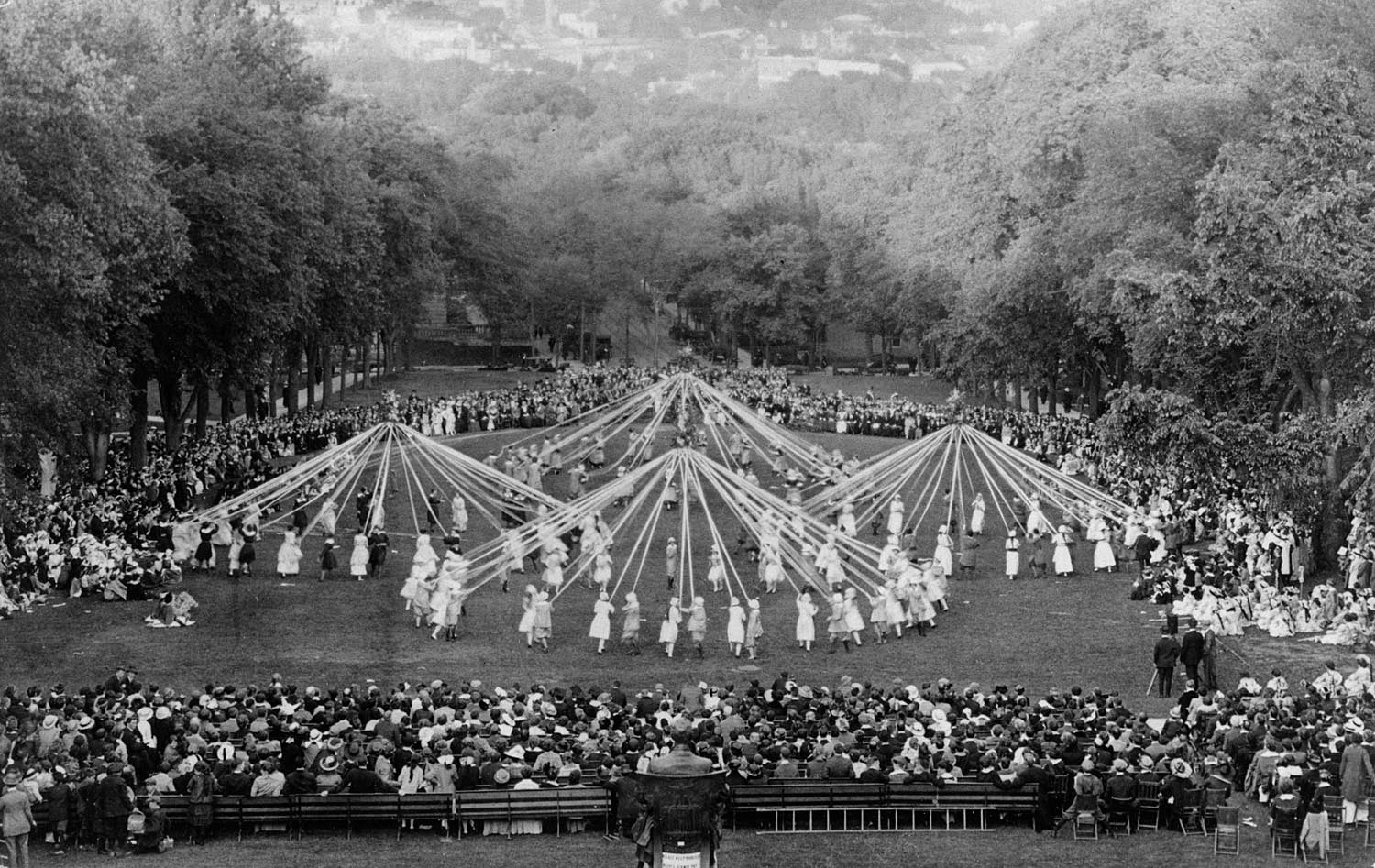In the above image, students dance around the Maypole at the May Fete on Bascom Hill around 1917. For many years, the school year concluded with the May Fete, an elaborate program of singing, dancing and celebrating outdoors. The Fete was discontinued when the nation entered World War I.
The May Day dance around the Maypole with colorful ribbons is an ancient custom. The Celts danced around a pole to ensure a bountiful planting season. The tradition’s pagan ties were tempered in the 19th century when the Victorians transformed it into a celebration of maidens and virtue. Communities still erect Maypoles with dancers celebrating spring, their ethnic heritage, or pagan fertility rites.
Maypoles were erected early in Wisconsin. Fur trader Therese Schindler, one of the rare female traders in the Great Lakes, recalled Maypoles on Mackinac Island and other French posts in the early 19th century. Snow often still covered the ground so the poles were often set in the ice. Notice of Maypole dances appear in newspapers in Racine, Eau Claire, Milwaukee, Janesville, Oshkosh and Madison throughout the 19th century and into the 20th. In 1903, the Racine Daily Journal recommended Maypole dancing as an “excellent scheme” for entertaining children at parties.
Stay informed on the latest news
Sign up for WPR’s email newsletter.
Wisconsin Public Radio, © Copyright 2025, Board of Regents of the University of Wisconsin System and Wisconsin Educational Communications Board.





